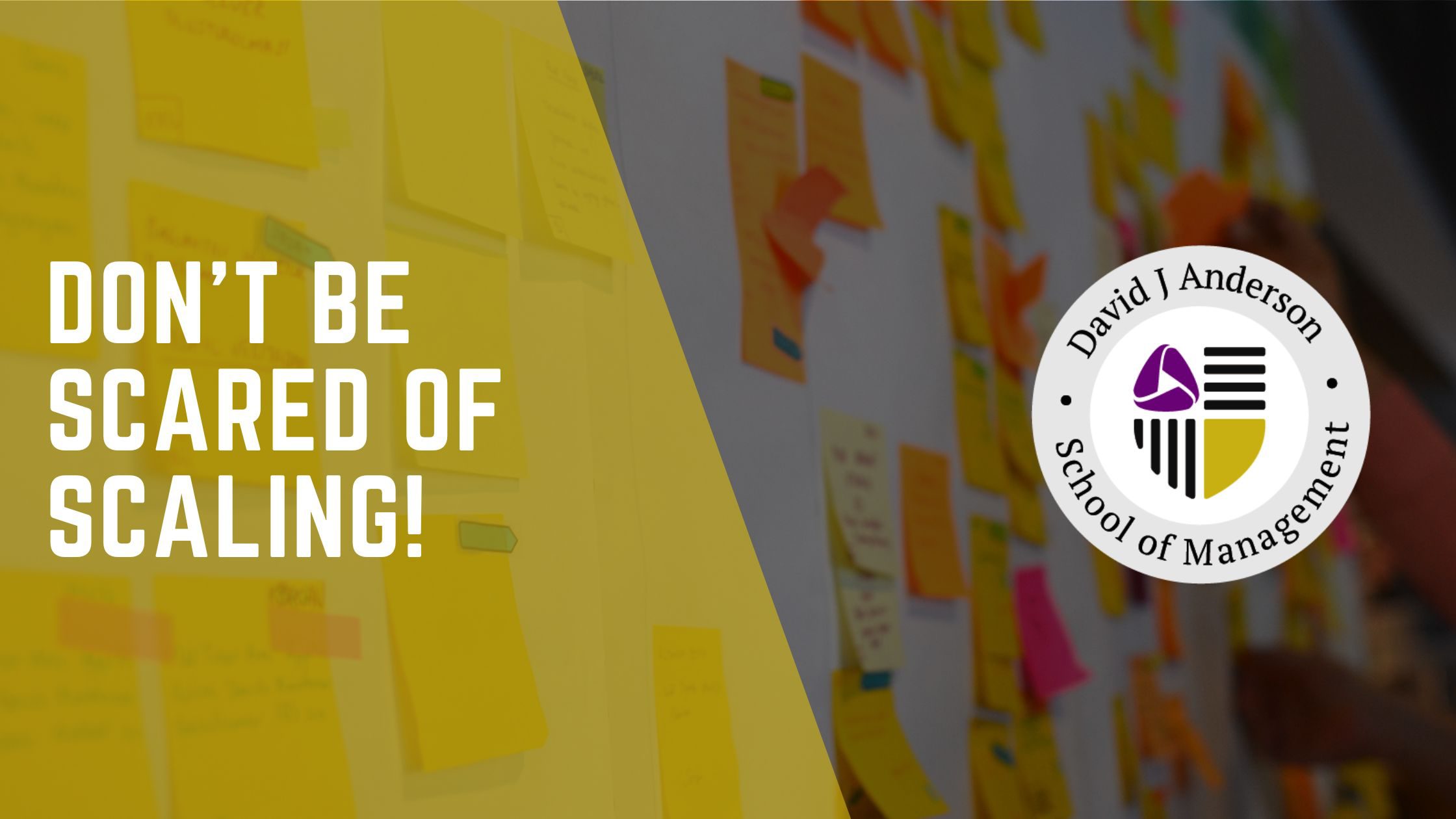Kanban Litmus Test: Getting to "pull" at enterprise level: Why is it so hard?
On my recent trip to China, I visited several companies with vast and impressive Kanban initiatives. In this 3-part blog series, I will share my realizations about the value of Kanban and the potential to do more, even at enterprise scale.
In part 1 of this series, I described the incredible benefits that Kanban is providing to organizations around the world. I asserted that far greater gains could be achieved if only Kanban initiatives were fully embraced and moved to a deeper level of “pull” at enterprise scale.
But how do we even know if we are achieving a complete pull system or not?
“The Kanban Litmus Test”
Since you adopted Kanban…
- Have managers changed their behavior?
- Has the customer interface changed?
- Has the customer contract changed?
- Has your service delivery business model changed?
If you cannot answer yes to the first two questions and ideally all four, then almost certainly you have not embraced Kanban fully and you haven’t yet made a switch to a “pull” paradigm.
If managers haven’t changed their behavior, your old “push” paradigm (and quite probably a culture of managing people, planning deterministically and focusing on utilization levels) hasn’t changed. Managerial behavior should have moved to focus on customer work orders, flow rates, flow efficiency and balancing demand against capability. If this hasn’t happened it is highly unlikely you have a true pull system in operation.
If you are pulling work from customer demand then the way you interact with customers, the way work is selected, sequenced and scheduled, should have changed.
Your method of interacting with the customers should be different than before Kanban. If you are still using the same planning methods and attending the same planning and prioritization meetings then it’s unlikely you’ve made a switch to a “pull” paradigm.
If you are operating a pull system, you should have a concept of flow and variation and be able to put capability-based service level agreements in place.
Managerial behavior should have moved to focus on customer work orders, flow rates, flow efficiency and balancing demand against capability.
You should be managing probabilistically rather than deterministically, and the way you make promises to your customer should have changed. If it hasn’t, if you still plan deterministically and make specific precise promises of dates, scope, schedule and budget then you haven’t switched to a “pull” paradigm.
Finally, if you’ve truly moved to pull you should understand business risks such as cost of delay sufficient that you can offer different business models based on urgency and risk and implement them with capacity hedged classes of service across your network of Kanban systems.
In short, if you don’t have deferred commitment, replenishment meetings to decide what to work on now, what to leave until later (and, if so, how much later), and what to discard altogether, together with service level agreements and classes of service, you most certainly haven’t made the transition to a “pull” paradigm.
You are still doing things the same old way, just with more visibility and some sustainable pace for individuals, which has improved quality, reduced rework, shortened delivery times, and given you up to 50% productivity improvement as a reward. If you can build on this established base, you will enable further improvements of 4- to 8-fold beyond your existing achievements.
Getting to “Pull”
If Kanban has already helped us with better visualization, better quality, more collaboration, a higher trust workplace, and a more sustainable pace of work, and given us gains of 10-50% why would we care to take it further?
The bottom line is that even in early Kanban implementations a decade ago we were seeing gains of 200%+ in productivity and drops in delivery times of 90%+. By failing to implement “pull”, Kanban adopters are leaving gains of at least 4 to 8 times more than they’ve already achieved with their visual boards and per person WIP limits.
The first Kanban system at Microsoft in 2005 produced productivity gains of 230%. It was replicated at Robert Bosch’s South Bend, Indiana facility in 2006. In the same time period, a Lean implementation at Hewlett Packard’s Laser Printer Firmware facility in Boise, Idaho produced 700% productivity gains with half of that being directly attributed to the Kanban system inspired by the example at Microsoft.
When managers are willing to embrace “pull”, to take on the leadership required to adopt new ways of thinking, new ways of managing, and to go and re-negotiate the interface and contract with the customer, the results are beyond their wildest dreams. So great, in fact, as to seem unobtainable and mythical. But they are not! These improvements are real, historical, well documented and repeatable!
By failing to implement “pull”, Kanban adopters are leaving behind gains of at least 4 to 8 times more than they’ve already achieved with their visual boards and per person WIP limits.
It’s easy to see why Kanban adoption is almost universally so shallow, and it is easy to explain why the Agile software development community was content, even determined that Kanban should be viewed as just a visual board and not a pull system featuring a virtual signal card system for deferred commitment as it was originally implemented and documented.
Why is it so hard to get to “pull”?
Getting to “pull” is a paradigm shift. It is a discontinuous (or disruptive) innovation in management thinking within the enterprise. If you merely adopt a visual board and relieve your workers of overburdening with some personal WIP limits, you don’t have to change paradigms. Shallow Kanban implementations represent continuous innovation within the existing paradigm. Managers don’t have to change their behavior. People don’t need to be retrained. It isn’t necessary to negotiate new interfaces and contracts with existing customers. Customers aren’t impacted at all. In fact, they may never be aware of the changes.
Implementing “pull” at Enterprise Scale
So what does it take to implement end-to-end pull at large scale? What is needed to unleash the potential 800% productivity gains?
The advice on where to start hasn’t changed much in years of teaching the Kanban Coaching Masterclass:
The best place to start to force the paradigm switch to “pull” whilst influencing change across the enterprise requires that you pick a service that is:
- Customer Facing
- Not mission-critical
- Highly visible
- Staff are enthusiastic, indeed may volunteer to pilot the changes
What is needed beyond this is leadership – leadership to take on the job of negotiating the paradigm shift to “pull” and helping the customers navigate how it affects them.
This isn’t trivial. It is the core reason why there are 5 days of training for Kanban coaches. Getting beyond shallow Proto-Kanban implementations to the disruptive innovation of the “pull” paradigm and proper flow systems is a non-trivial challenge requiring considerable experience and skills.
So where are firms going wrong? Or indeed, are they going wrong? After all, we embrace proto-Kanban as a legitimate way to build trust in the method and to deliver early wins and tangible improvements with a minimum of resistance.
Getting to “pull” is a paradigm shift…
Shallow Kanban implementations represent continuous innovation within the existing paradigm.
The challenge is how to take it to the next level.
It would be all too easy to say, “get a coach!” Indeed, get a small army of coaches, if you intend a scale of 100,000 people. Send an entire squad to Kanban Coaching Professional training and get them certified in the knowledge and skills to enable it all to work.
While this may be important, it isn’t enough! There needs to be managerial sponsorship for the change, understanding of why it is necessary and what the benefits will bring, and the willingness to take on the leadership risk to make it happen. The personal career and corporate political risks are tangible. Switching to “pull” and abandoning determinism for a more probabilistic style of management is foreboding.
In the final part of this series, I will describe the 6 reasons companies fail to achieve “pull” and what they can do to overcome these issues.
Kanban Coaching Professional Masterclasses and the modular Enterprise Services Planning management training program are offered through the David J. Anderson School of Management based in Seattle, WA. Classes are also offered at locations around the world and on-premises for private corporate clients.
Enterprise Services Planning tools are available in SwiftKanban ESP from Digite




